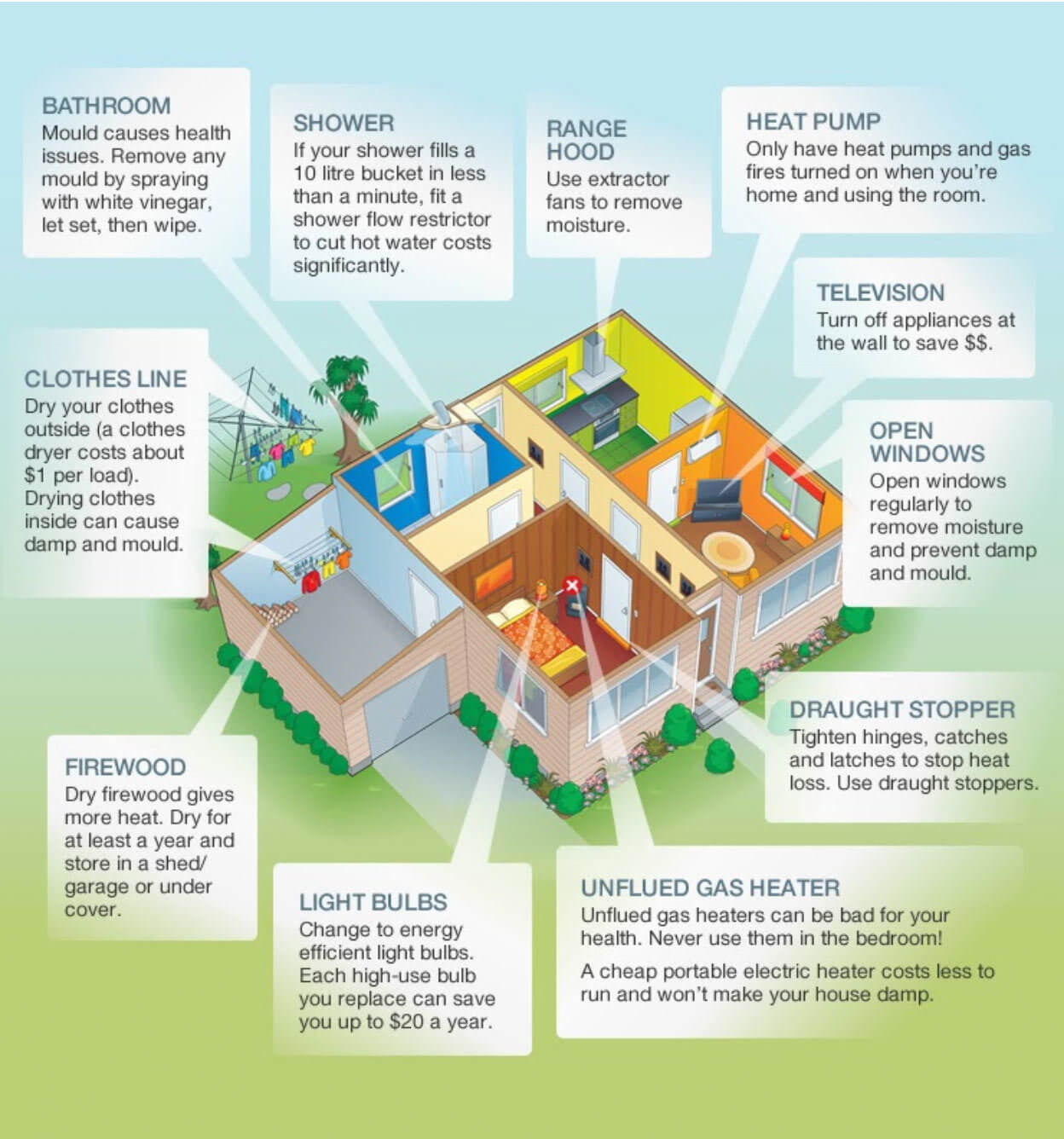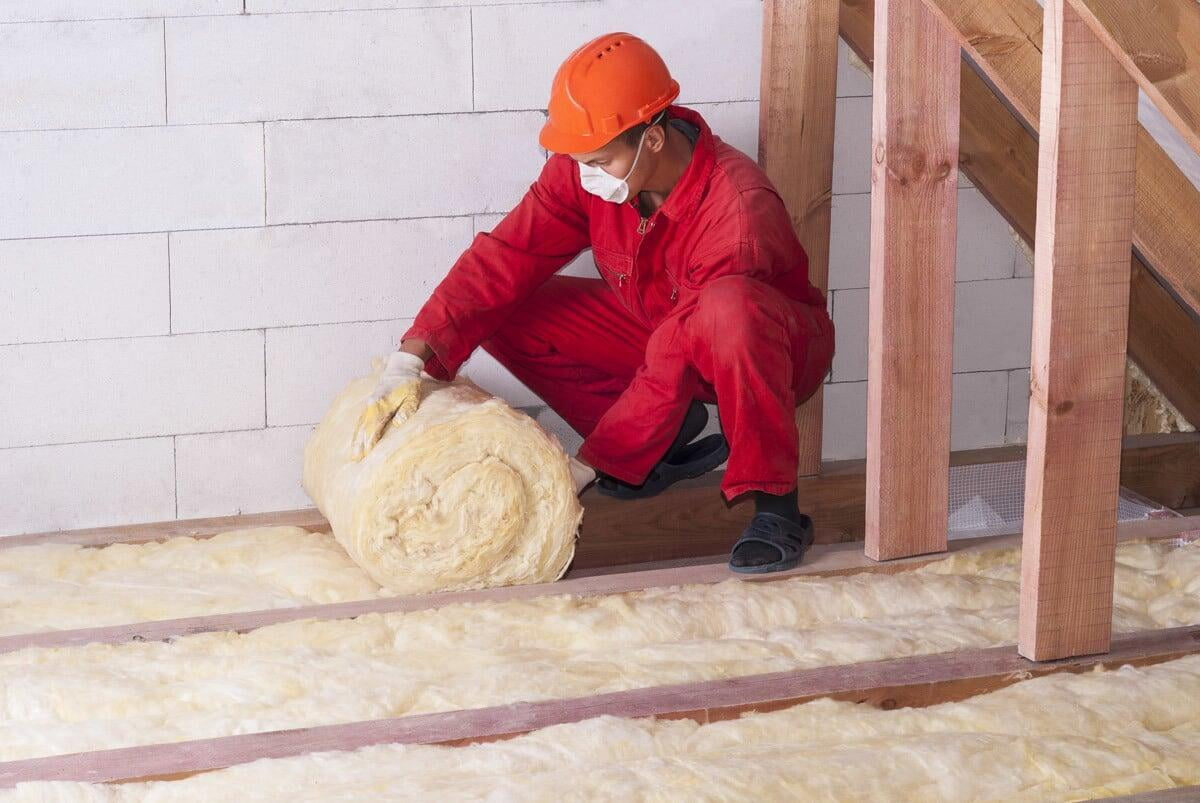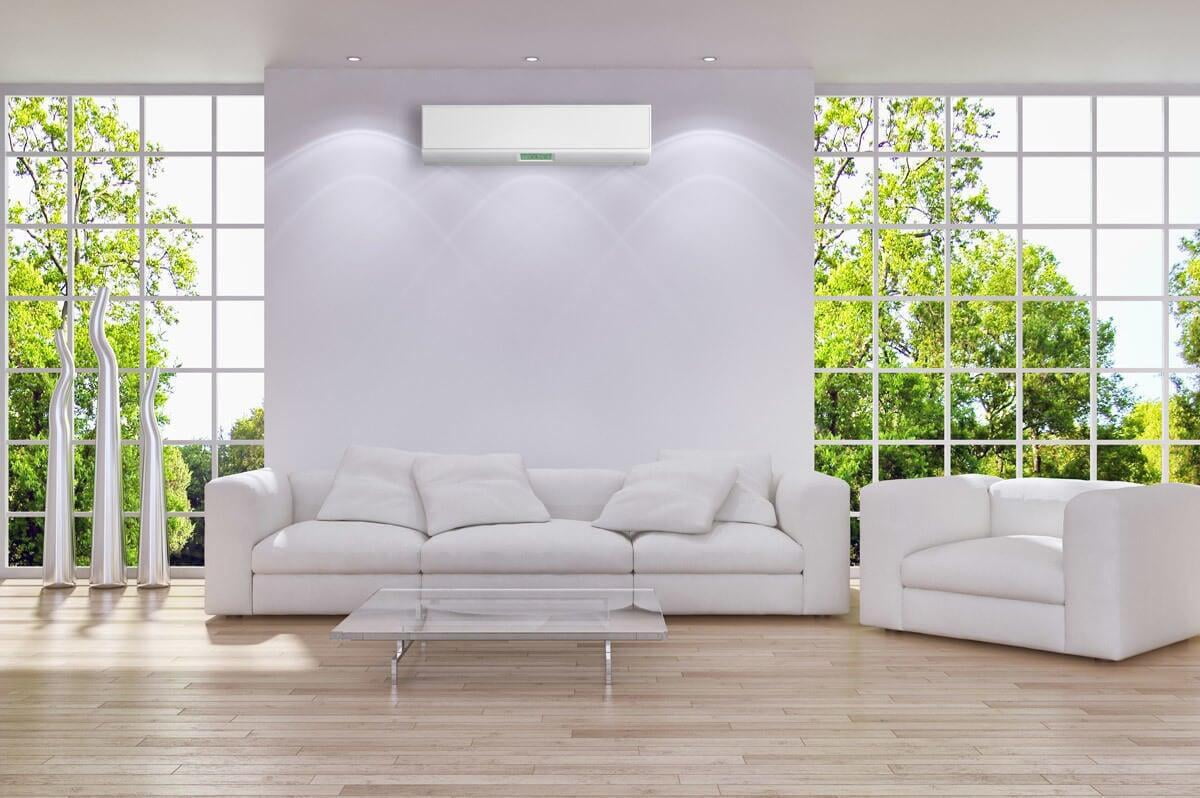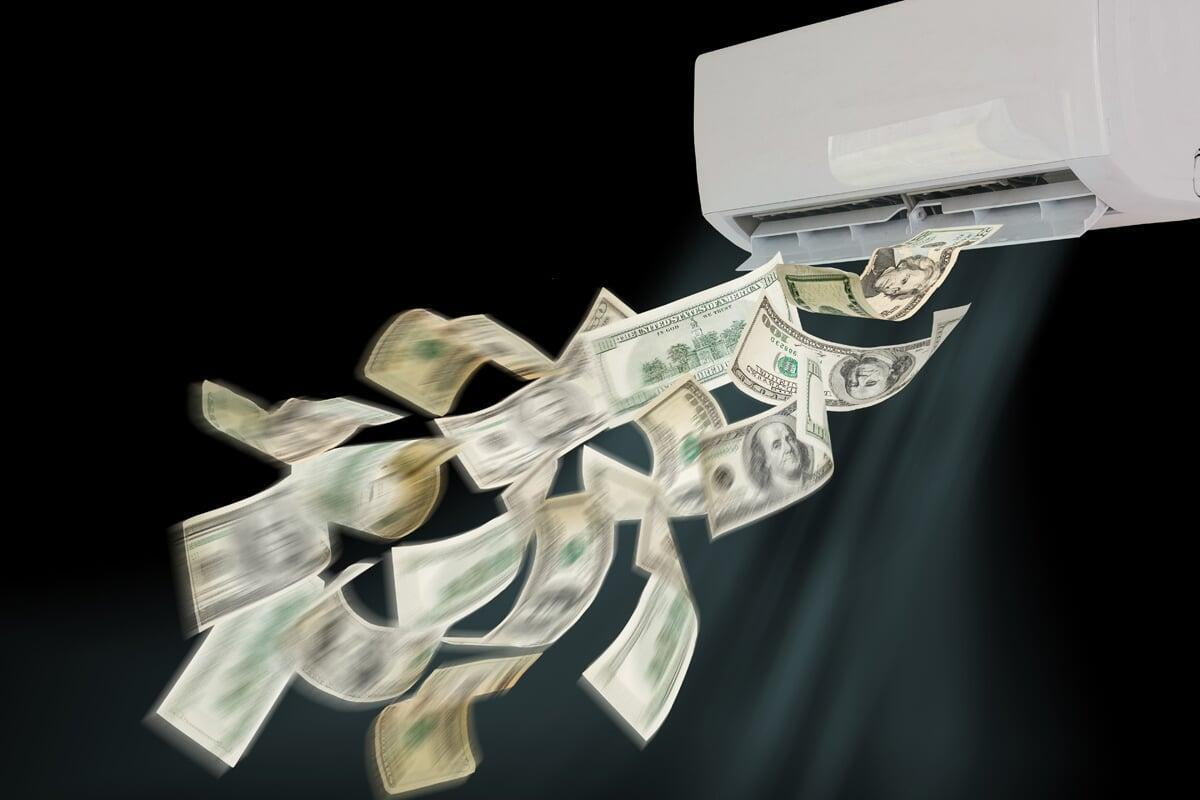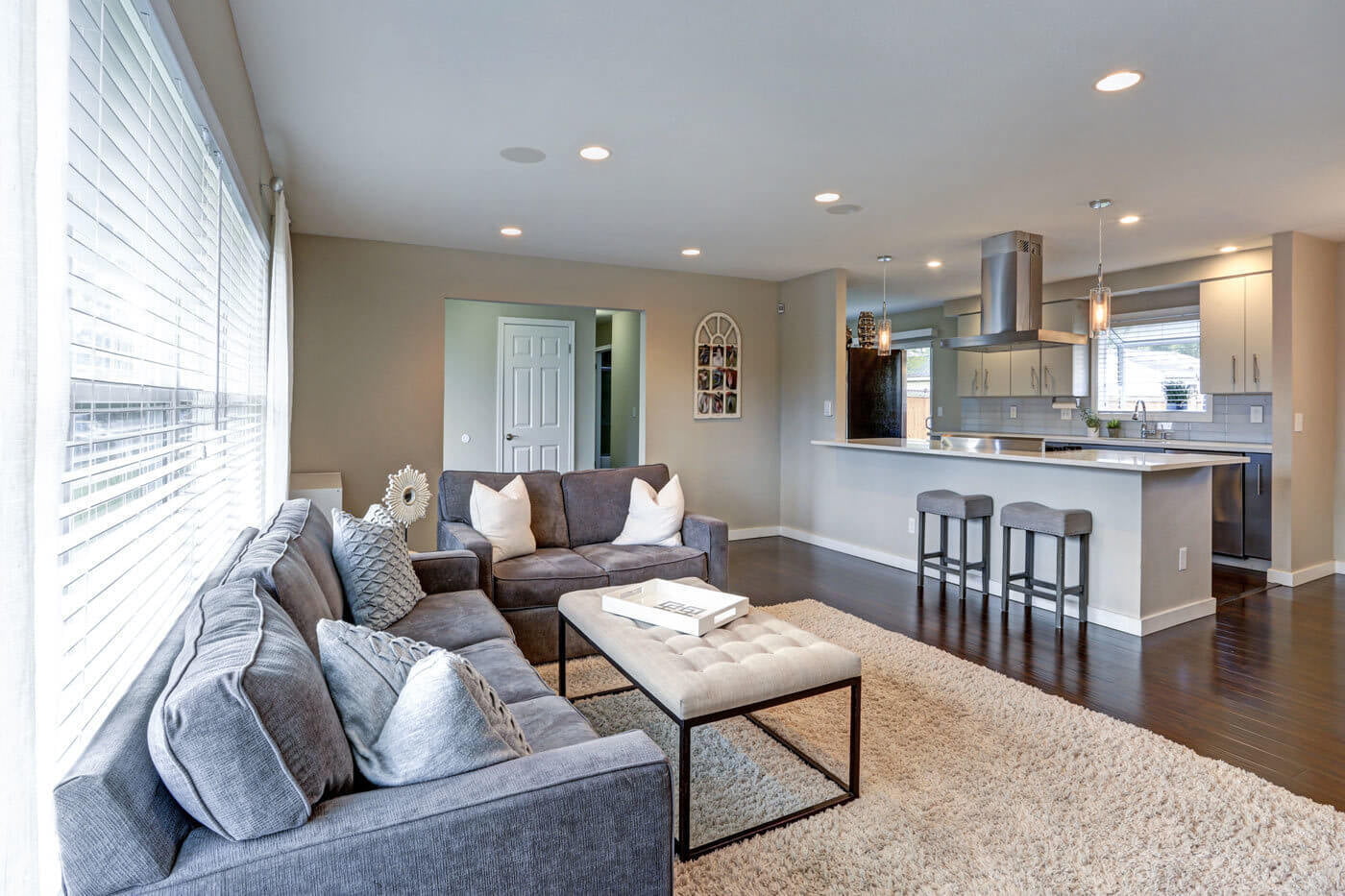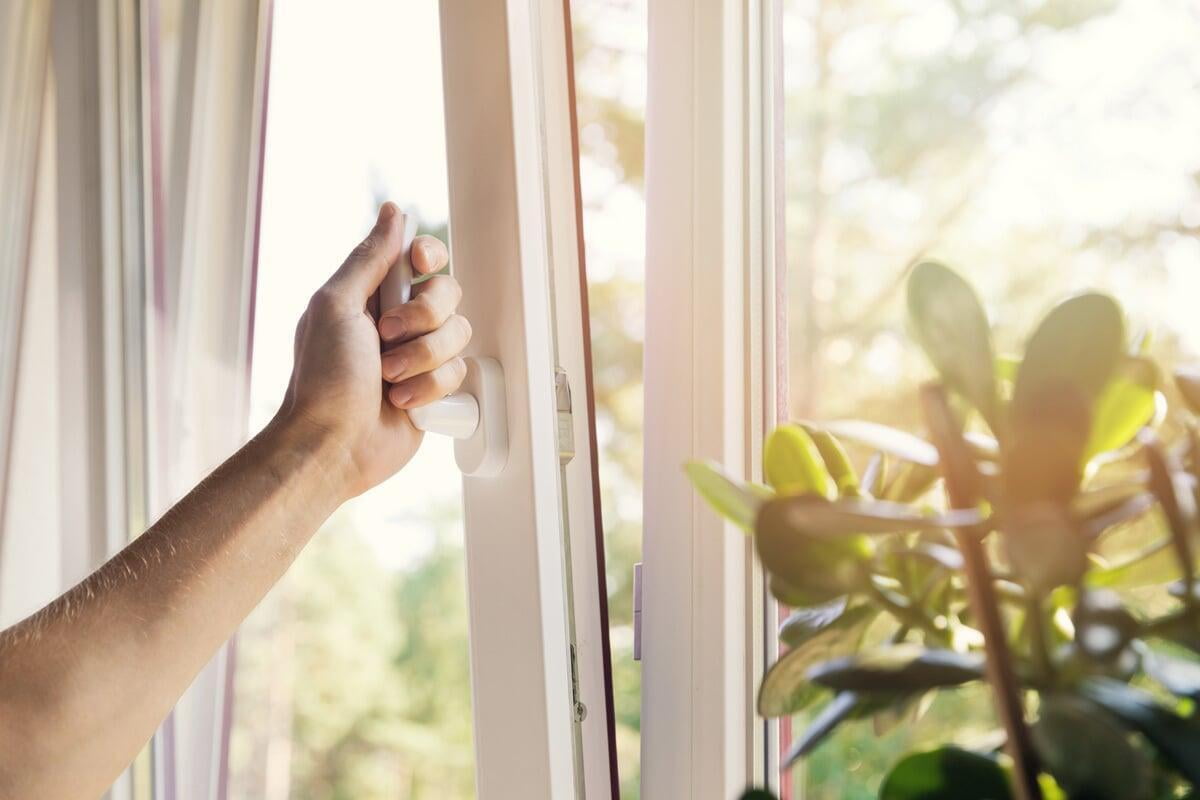Check your insulation
All heat pumps/air conditioners also offer additional benefits, such as dehumidify and cooling functions, Most of them also have other useful features such as timers for switching them off and on or wifi control/app control so you can set them to warm the house before you come home.
Have a good heating system
How to use your heating efficiently
Energy efficient lighting
Additional energy savings ideas
Many daily household tasks like cooking, washing and showering create moisture. Installing an externally vented fan in your kitchen and bathroom is the most efficient way of getting rid of this moisture. Otherwise be sure to open a window during these activities.

